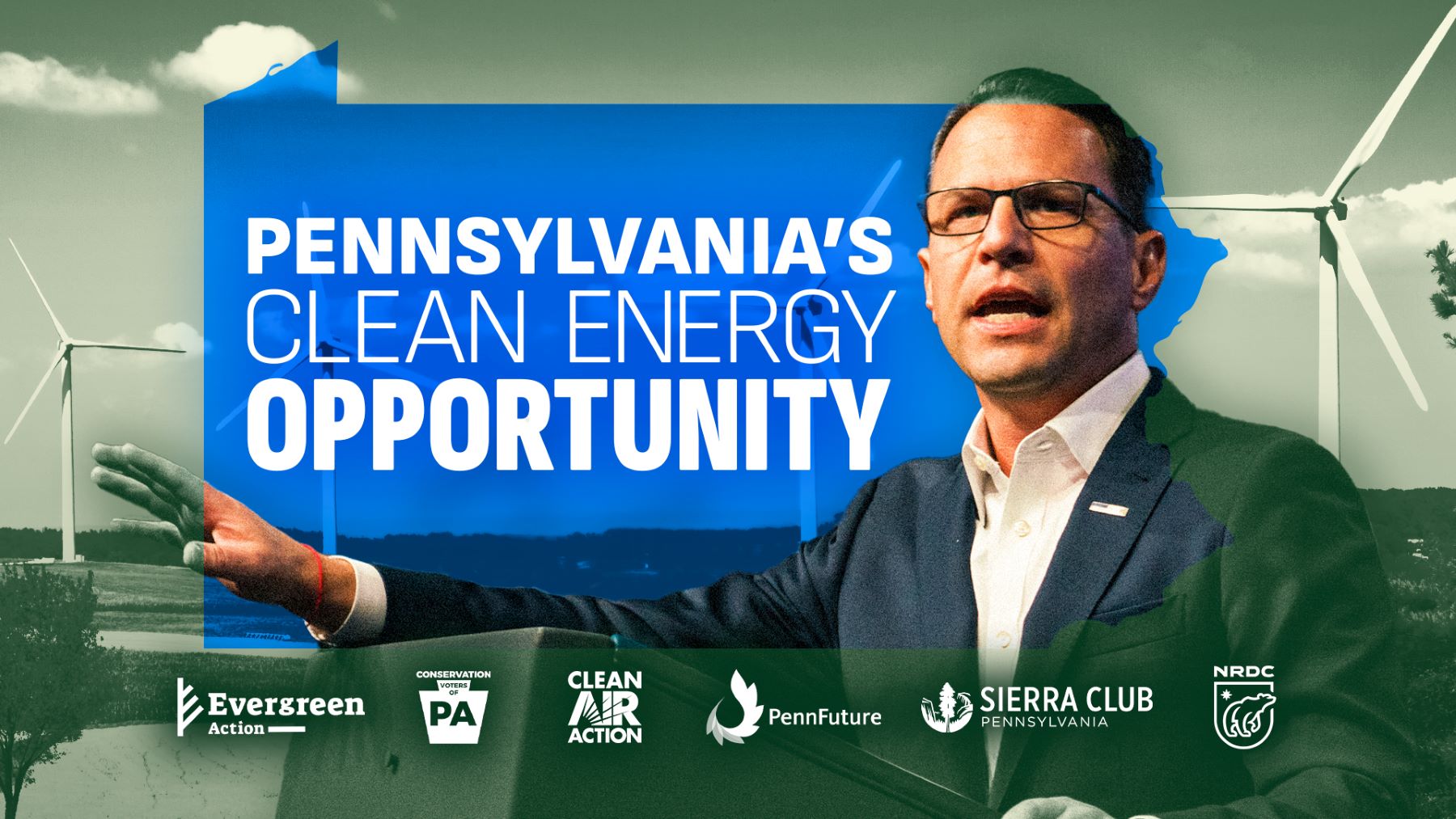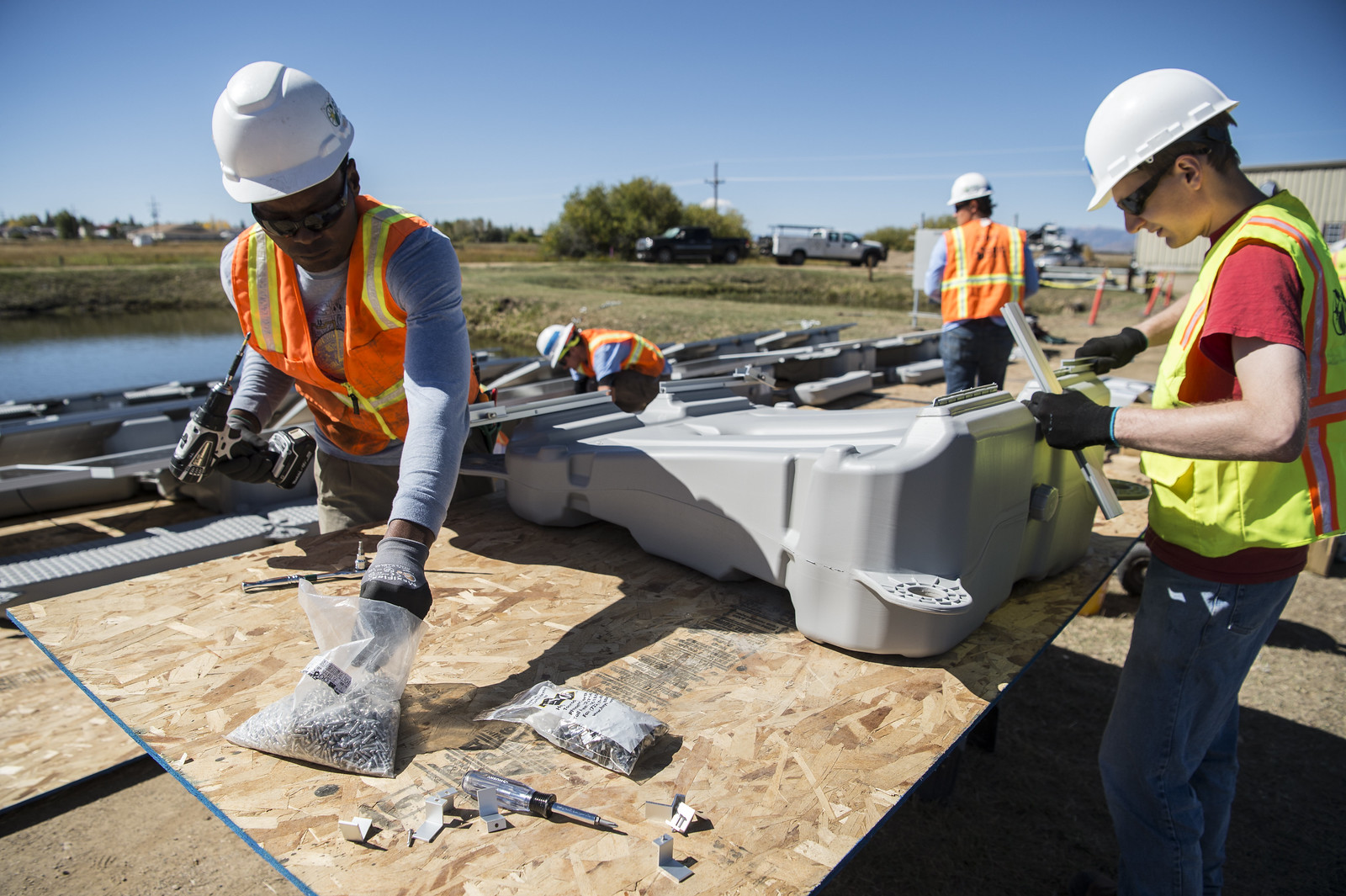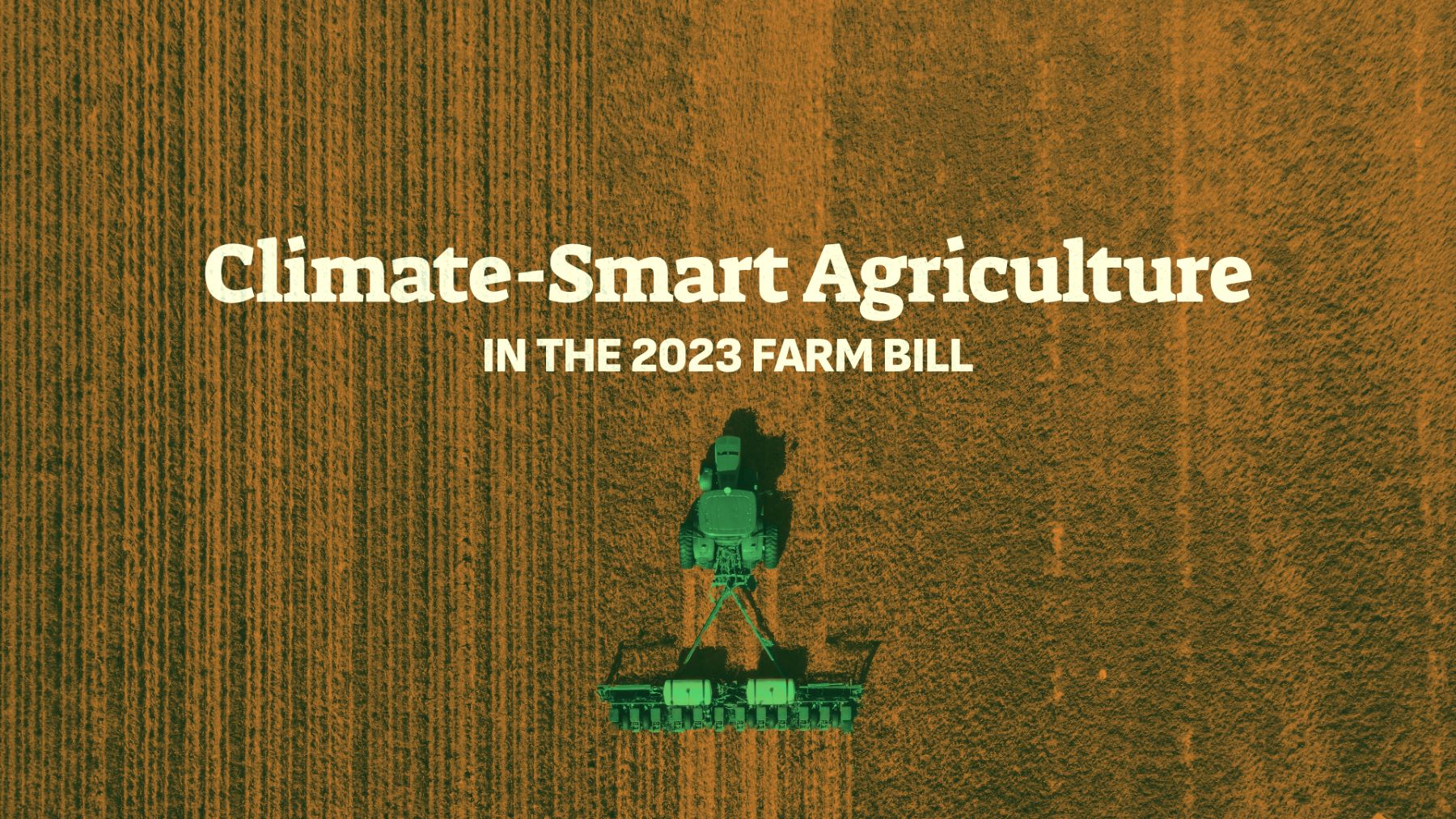Background
The IRA provides at least $370 billion in projected climate investments that will create jobs, lower costs, cut pollution, promote justice, and supercharge the clean energy transition. States are eligible to receive funds from nearly 40 different IRA programs; a grand total of more than $50 billion from federal programs that could go directly to state governments. Most grant funding will be awarded by the end of 2024. Some grants will require complementary state seed money funding, and private investment decisions need to be made now to fully capitalize on the IRA’s tax incentives. Federal tax credits are uncapped: The more Pennsylvania invests in clean energy, the more federal support it can secure. Complementing IRA funding, the IIJA is expected to bring over $5 billion to Pennsylvania in sustainable transportation options—including public transportation and electric vehicle (EV) infrastructure—and provide additional financial support investments in weatherization and clean water.
Recognizing this opportunity, Governor Shapiro established the Office of Critical Investments earlier this year to secure as much federal investment for Pennsylvania as possible. Since the beginning of his term, his administration has been hard at work securing funds and preparing applications for the most high-impact and competitive programs. Moreover, the governor’s Regional Greenhouse Gas Initiative (RGGI) Working Group agreed in its recent summary report that it is critical for the administration to “maximize and leverage the job creation and other benefits of federal funding from the IRA and IIJA.”
Now, as Governor Shapiro contemplates next year’s budget and policy priorities ahead of his 2024 budget address and the Biden administration prepares to award the majority of the IRA’s competitive programs award funding over the next year, the Commonwealth should take additional strategic action to be competitive for federal and private clean energy investments. All of the below recommendations adhere to the Governor’s three-part test for climate and energy policy:
- Protect and create energy jobs,
- Take real action to address climate change, and
- Ensure reliable, affordable power for consumers in the long-term.
Here are nine actions that meet Governor Shapiro's test and should be prioritized moving forward:
1. Fully Implement the Regional Greenhouse Gas Initiative
Pennsylvania finalized regulations to participate in RGGI in 2022 under Governor Tom Wolf. It is critical that the Commonwealth equitably and effectively implement RGGI, assuming court approval post ongoing litigation. Fully implementing RGGI will lower energy costs for residents and businesses by $1.5 billion and bring in nearly $1 billion more in federal funding. Pennsylvania has already missed out on $1.5 billion in RGGI proceeds. Now is the time for Pennsylvania leaders to move forward to help lower utility bills, address climate change, and bring new jobs to the Commonwealth. Governor Shapiro recently appealed a misguided ruling on RGGI to the Pennsylvania Supreme Court, and full implementation must proceed as soon as possible. Moreover, last May, the U.S. Environmental Protection Agency (EPA) proposed national carbon reduction standards for fossil fuel power plants. Pennsylvania’s participation in RGGI will serve as a ready-made, cost-effective potential compliance pathway to meet these new standards, which will be finalized in 2024.
2. Increase the Development of Renewable Energy Generation to Support Clean Energy Goals and the Clean Energy Economy
Renewables currently generate three percent of Pennsylvania’s electricity with 31 percent net electricity generation from nuclear power. Governor Shapiro should push the General Assembly to strengthen the Alternative Energy Portfolio Standard (AEPS) or potentially enact a new Clean Energy Standard (CES) via legislation. In the event of inaction, he should explore ways to implement clean power requirements through executive action and public utility commission proceedings. The governor campaigned on increasing Tier 1 renewable requirements in the AEPS from eight percent to 30 percent by 2030 (state law enacted back in 2004 established the eight percent target for 2021, which has been achieved and left moribund). State policymakers should strongly consider a target exceeding 30 percent, given the increasing impact of the climate crisis on Pennsylvania communities and the new economic landscape created by IRA’s investments. Increased development of renewable energy should be paired with battery storage to maximize clean energy generation.
An accelerated path to decarbonizing the electricity sector would help unlock hundreds of billions of dollars in IRA tax credits and other power sector investments that incentivize clean energy deployment, effectively accelerating the clean energy deployment while cutting costs for consumers. For example, advancing popular and commonsense solutions to increase access to community solar would make Pennsylvania more competitive for the maximum award in Solar for All, a $7 billion federal program in the Greenhouse Gas Reduction Fund. The administration should pair a new CES with state-level grid improvements and transmission reform to ensure that clean energy can get to those who need it. Legislation to increase the AEPS or transition to a CES should include policies to bolster workforce development and high-quality union jobs to support successful implementation.
3. Advance Building Electrification and Energy Efficiency in Order to Lower Consumer Costs, Cut Pollution, and Improve Public Health
Pennsylvania must take action to crack down on the harmful pollution that comes from the buildings sector. The IRA provides significant financial support to states for residential decarbonization through home rebates, e.g., the High-Efficiency Electric Home Rebate Act (HEEHRA). As the administrator of these funds, state agencies must ensure coordination of federally-funded programs with existing state and utility programs like Whole Home Repairs, Act 129, and LIURP. Further, Pennsylvania should develop and implement a plan to market and increase awareness of these programs and rebates for Pennsylvanians. These efforts will help ensure residential electrification and energy efficiency programs are implemented as efficiently and equitably as possible.
Additionally, over $1.2 billion in funding—from both the IIJA and the IRA—is now available to facilitate the adoption of more ambitious building codes. Pennsylvania has commenced the multi-year process of adopting the newest building codes, the 2021 International Energy Conservation Code (IECC), and should consider pursuing the IRA Building Codes Technical Assistance formula, and other available federal competitive grant funding programs to support the latest residential and commercial building codes adoption. Finally, labor and workforce development will play a critical role in achieving building electrification and efficiency and thus must be incorporated in the planning process from the outset. Partnerships with industry and leveraging federal programs like Training for Residential Energy Contractors (TREC) can help build the pipeline needed to meet the expected demand for energy efficiency careers. The governor can bolster job creation and residential and commercial electrification by proposing additional budget investments in energy efficiency workforce development and consumer education.
4. Address Air Pollution Through Advancing New Clean Transportation Standards and Funding
Pennsylvania should adopt standards to decarbonize the transportation sector, save consumers money and curb dangerous air pollution that is a menace to public health and disproportionately impacts communities of color. Specifically, the Pennsylvania Department of Environmental Protection (DEP) should commence the state rulemaking process to adopt the Advanced Clean Trucks (ACT) rule that aims to fight dangerous pollution by requiring truck makers to produce a greater percentage of zero emissions trucks each year until 2035 (13 states have or are in the process of adopting ACT). The governor should propose additional tools to incentivize EV adoption by incorporating EV charging infrastructure funding and EV school buses in the state budget to supplement the National Electric Vehicle Infrastructure (NEVI) Formula Program funding; work to progressively increase Pennsylvania’s state EV rebate for consumers; and address state transportation funding challenges without hindering EV deployment. The Pennsylvania Department of Transportation (PennDOT) and DEP should work collaboratively to ramp up consumer education on the benefits of EV adoption. In the interim, Governor Shapiro should take steps to expand former Governor Wolf’s 2019 executive order on state public fleet electrification and include utility and medium and heavy-duty vehicles, enabling the state to take maximum advantage of the federal Commercial Clean Vehicles Credit and direct pay to finance this transition.
5. Prioritize the Decarbonization of the Industrial Sector
Pennsylvania is rightfully focusing its application for the federal Climate Pollution Reduction Grant program—one of the largest competitive IRA grant opportunities —on industrial decarbonization since it is the highest source of climate pollution in the state. As identified in the Pennsylvania Greenhouse Gas Inventory Report, Pennsylvania should focus its industrial decarbonization strategy efforts on addressing the combustion of fossil fuels to heat and cool industrial buildings and equipment, steel and iron manufacturing, cement production, production of ozone depleting substance (ODS) substitutes, underground coal mining, and fossil gas production and transmission. Industrial decarbonization should incorporate a wide array of mitigation approaches, such as efficiency improvements, electrification, hydrogen fuel-switching, and methane abatement. To achieve this strategy, Pennsylvania must rapidly invest in clean energy production to help support both green hydrogen and electrification capacity for industrial decarbonization.
Industrial decarbonization presents an incredible opportunity for high-quality job creation and workforce development. As such, any industrial decarbonization strategy must engage organized labor and working families to ensure that new and incumbent workers are able to participate in this transition. Meaningful community and stakeholder engagement, especially in environmental justice communities, is also necessary to help ensure the communities most impacted by industrial pollution benefit from industrial decarbonization.
As Pennsylvania focuses on the deep decarbonization of its industrial sector, it must prioritize adopting stronger green procurement policies. Governor Shapiro should direct his administration to engage with the federal government on its Federal-State Buy Clean Partnership, which aims to support states in their efforts to advance clean procurement.
6. Develop and Implement a Workforce Development Strategy to Seize Emerging Clean Energy Job Opportunities
Pennsylvania needs a coordinated and well-funded strategy for clean energy workforce to help ensure a successful transition. Governor Shapiro has already taken meaningful steps to demonstrate commitment through the creation of the Commonwealth Workforce Transformation Program (CWTP)—which commits up to $400 million from IRA and IIJA funding for workforce development and on-the-job training—and the establishment of the Pennsylvania Office of Transformation and Opportunity. The governor can expand on this progress by adopting an all-of-government approach to prepare workers and attract clean energy investments. The governor should ensure his budget proposal allocates adequate funding and resources to support this critical initiative.
Additionally, centralizing coordination of clean energy workforce development in the Office of Transformation and Opportunity or PA Department of Community and Economic Development could enable the development and implementation of a successful workforce development strategy. Having one workforce coordinating body would help foster public-private partnerships, especially with labor unions and employers, and capitalize on existing and forthcoming federal funding resources (e.g., Climate Pollution Reduction Grant program). This strategy should target key workforce development sectors—including power, transportation, industrial, energy efficiency, and advanced manufacturing—and identify pathways for high-quality union jobs. Several states have already undertaken these efforts and provide a roadmap of approaches for Pennsylvania to consider such as Colorado, Illinois, New Jersey, and New York.
7. Advance a Clean Energy Economic Development Strategy to Maximize In-State Investments and Benefits to Local Communities
Complementary to workforce development, Pennsylvania also needs a clear and robust economic development strategy to capture outsize private investment for next generation energy and manufacturing jobs. To achieve this, the Commonwealth should identify which sectors are best positioned to attract and deepen investments, complementary assets including human capital, opportunities for existing in-state businesses, and current and potential future incentives to bring these investments (Wisconsin, New Jersey, and Great Lakes region have example approaches).
Pennsylvania currently provides significant subsidies and incentives to the fossil fuel industry, but it needs to update its playbook to position the Commonwealth to be a clean energy leader and meet the energy demands of the future, particularly given the new landscape the IRA presents. The Shapiro administration and the General Assembly should develop and aggressively deploy state seed money investments to leverage more federal funding to maximize the benefits of federal funds like the State Energy Financing Institutions funding offered by the Department of Energy, a critical step that other states New York have already taken. The governor should also propose to align Pennsylvania’s tax and economic development incentives with those in the IRA, as Colorado recently did. Finally, to ensure Pennsylvanians benefit from all of these federal and state clean energy programs, tax credits, and rebates, Pennsylvania’s Department of Community and Economic Development, with support from the General Assembly, must develop and implement education and investment programs to engage the existing business community, local government officials, and non-profit leaders on how to take advantage of new federal opportunities.
8. Double Down on Efforts to Reduce Methane Pollution From Oil and Gas Wells and From Pipelines.
Governor Shapiro has been a leader, dating back to his days as attorney general, in holding the oil and gas industry accountable for polluting Pennsylvania’s water and air and in plugging abandoned oil and gas wells to stop methane pollution. Methane is a powerful greenhouse gas and contributes to ground-level ozone forming, harming Pennsylvanians’ respiratory health. Pennsylvania has already received funds from the IRA’s Methane Emissions Reductions Program and recently marked the capping of its 100th well in just 2023. Pennsylvania can remain a frontrunner for these funds by continuing to prioritize and build upon past work to reduce methane pollution. Pennsylvania could look to New Mexico’s recently updated standards for monitoring for and fixing leaks in the oil and gas system as a model for a strong approach to reducing pollution and reducing waste in the oil and gas system.
9. Support Climate-Smart Agricultural Practices
Pennsylvania should support farmers who adopt climate-smart agricultural practices, building on federal dollars now available. Adopting state-based incentives for climate-smart agriculture will help more farmers implement these practices and help achieve climate and water quality goals. For example, in Maryland the state Cover Crop Program provides payments to farmers who plant cover crops—in some cases as high as $155 per acre. This promotes soil heath and biodiversity, helps recover the Chesapeake Bay by reducing fertilizer runoff, and reduces greenhouse gas emissions associated with chemical fertilizer production and use. Pennsylvania could create a similar program to complement federal opportunities from the U.S. Department of Agriculture (USDA). USDA’s Environmental Quality Incentives Program (EQIP) was significantly expanded by the IRA and provides payments to farmers for a variety of environmentally friendly agricultural practices, including $315 million and up to $25 per acre for cover cropping.
Currently, Governor Shapiro has a unique opportunity to bring billions of dollars in federal and private clean investment to Pennsylvania, but the Commonwealth must take action now. With most of the IRA funding being awarded in 2024, this upcoming state budget cycle and complementary executive action could not be more important in bringing maximum investments and benefits to Pennsylvania.



